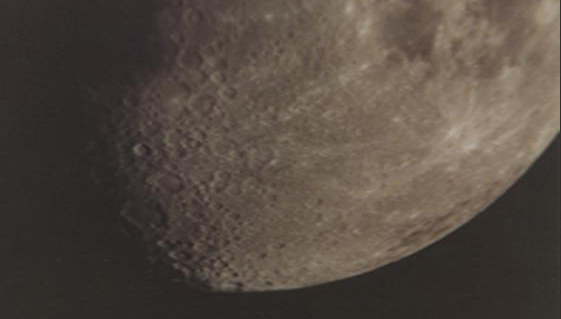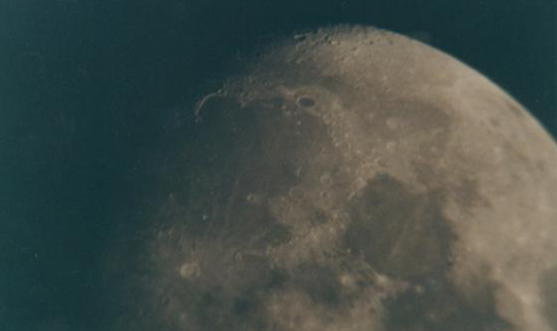The first 3 images are a Waxing Gibbous (Gibbous from the Latin word meaning "a hump or "bulging") Moon taken roughly 9 to 11 days after new moon. While the phases are changing from new moon to full moon it is waxing, when it is changing from full moon to new moon it is waning. The dark flat areas are called maria, meaning "seas" (pronounced "MAR ee uh"; singular, mare, pronounced
"MA ray")
Galileo discovered that the moon had large flat and cratered areas, when he first viewed it through his small telescope in 1609.
The maria areas of the moon, were once cratered as the rest of it was, but were filled in by volcanic material -lava- that flowed from beneath its surface, more than 3 billion years ago. The craters you see now are from impacts since then.




Back Home